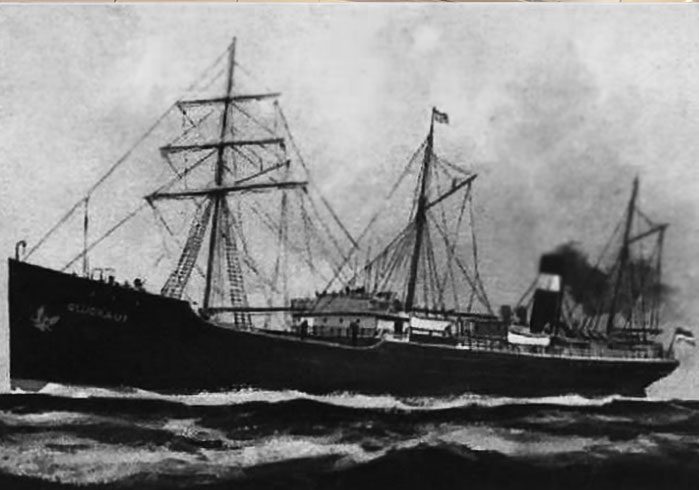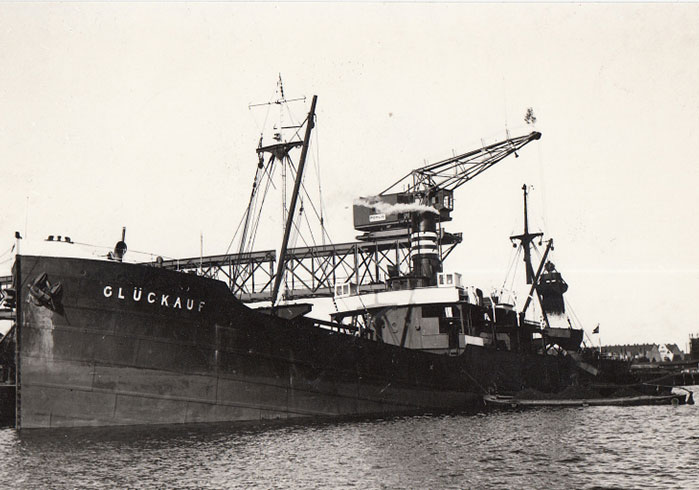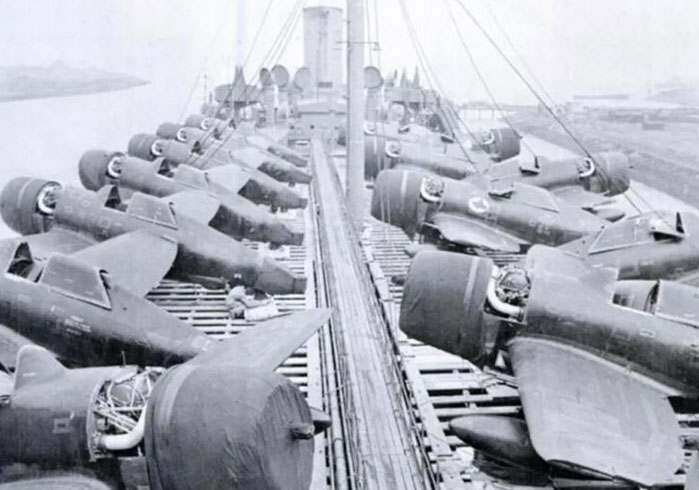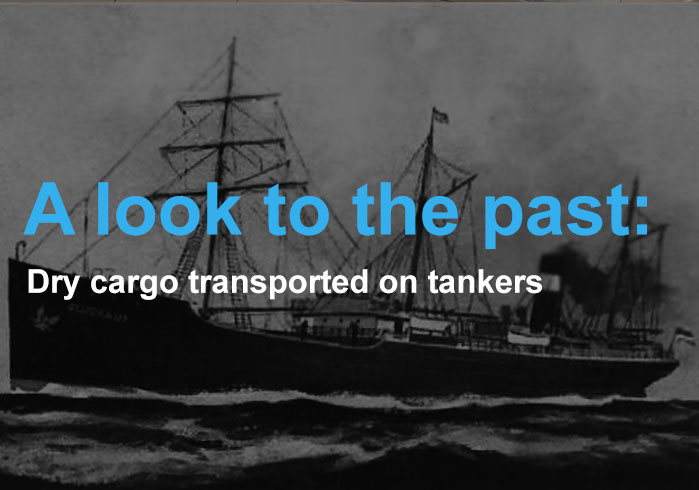
In 1872, the first oceangoing steamer designed to carry oil was built. The Belgian-flagged Vaderland was designed and constructed to carry huge quantities of oil on the sea. However, the actual service itinerary for the ocean steamer included ferrying immigrants to the USA. The return journey would then include petroleum that was destined for Europe.
Before its maiden voyage, authorities decided that using the Vaderland would be too dangerous. Hence, a decision was made to convert the ocean steamer into a passenger-cargo liner. In any event, the Vaderland never carried any oil cargo; contrary to the original purpose for which it was designed and constructed.
The 1800’s: Steamers and modern tankers
In 1886, the Gluckauf was constructed. This was the prototype of the modern tanker as we know it. Nevertheless, there had been several sailing ships that were owned and operated by oil companies during the same period. The Falls of Clyde is one such sailing tanker whose remains are found in Honolulu.
The practice until the recent time was to fit the vast majority of tankers with a dry cargo hold. This would normally be located towards the forecastle. The hold included cargo booms that would be used for loading and discharging cargo. On average, the hold would have a capacity of 15,000 cubic feet. Some of the products that would be carried here include chemicals, oil, and lubricant which could be stored in cases, barrels, or drums.

World War II: A successful experiment
Over time, tankers started to enter dry trades. This was particularly true in 1944 during World War II’s last stretch in Europe. The devastation of agricultural regions meant that there was little grain in the fields and even fewer people to harvest it.
Most of the farmers had been conscripted into the war. The reality was that Europe was on the brink of starvation. Indeed, the Battle of the Atlantic had commandeered many of the existing cargo ships. This left little transportation options for agricultural products.
It was this sense of impending doom and the urgency associated with it that inspired a new form of experimentation with transport on the oceans. This involved loading bulk grain onto the newly built tankers. These tankers had never been involved in the oil trades.
The experiment involved loading the vessels at Canadian ports to pick up grain from that relatively prosperous and peaceful region. The gamble paid off and the vessels made it across to Europe. However, there is a dearth of specific information about the actual voyages.

Influence of war conditions on the vessels and grain trade
World War II heralded a significant increase in demand for transportation on the seas. This meant that the industry came up with the innovation of using the open deck space as a means of transportation. This was in the pre-airplane era when ocean steamers were the only realistic modality for crossing continents with cargo.
These wartime installations were called “Meccano Decks” because they resembled Meccano toys and Erector Sets. The vast majority of ships were standard T-2 vessels. These were constructed using uniform steel and aluminum beams. When bolted together, these components could easily be adapted to most standard tanker decks.
When the war ended, the tankers fell into private or civilian use. During this time, the Meccano decks were removed to eliminate the possibility of topside weight. This weight would not make sense for the use of a private operator.
1950’s: Ongoing improvements
It was in 1954 that tankers officially entered the grain trade. This decision was based on the economics of the day which required large scale importation and exportation of grain. Gulfcrest (which was constructed in 1926 for the Gulf Oil Company) was a pioneer in this respect. Initially, the vessel had served for 27 years as a crude oil carrier around the US East Coast and the Caribbean.
By 1954, the Grain Rules from the 1948 International Convention for the Safety of Life at Sea (SOLAS) were in effect. These rules called for the installation of bins and feeders in all spaces where bulk grain was to be loaded. However, the traditional tanker had holds or tanks. These were usually subdivided by longitudinal and transverse bulkheads.
Eventually, the bulkheads would honeycomb the hull into about 30 compartments or individual tanks. On one hand, it would, therefore, seem rather impractical to attempt to fit these ships with bins and feeders. On the other hand, the tankships were endowed with in-built stabilization.
Hence, the longitudinal bulkheads were relocated in such a way as to reduce the transverse heeling movements. They also had the advantage of accommodating the free surfaces of liquid cargo. Under this flexible design, it was possible to convert the vessel to carry grain.
Specific requirements for ferrying grain
Although grain could move after stowage, it was less fluid than the oil which had traditionally been transported using these vessels. Hence, the first grain rules for tankers were issued in 1954. This included regulations concerning ship structure, internal or external fittings, and levels of cleanliness.
Not all vessels that had been designed to ferry oil met the stringent criteria. For example, there was a need to subdivide the structure of the ship into suitable longitudinal bulkheads. These would not be fitted with double bottoms.
In time, hundreds of tankers joined the grain trade. Nevertheless, most of the modern tankers today cannot fit the rules that were set in 1954. Hence, there has been a gradual shift away from using tankers in the grain trade.
Wrapping up
Dry cargo tankers have a long history that is embedded within wars and economic need. Initially, these vessels had been designed to carry oil. Then, the war meant that there was a need to import food into Europe from places as remote as Canada. The vessels had to be converted for this use. When the war ended, there was a move towards private commercial use. Once again, the vessels had to be converted into something suitable for the new demands.



